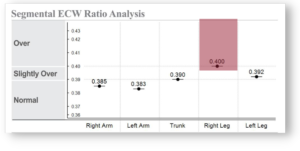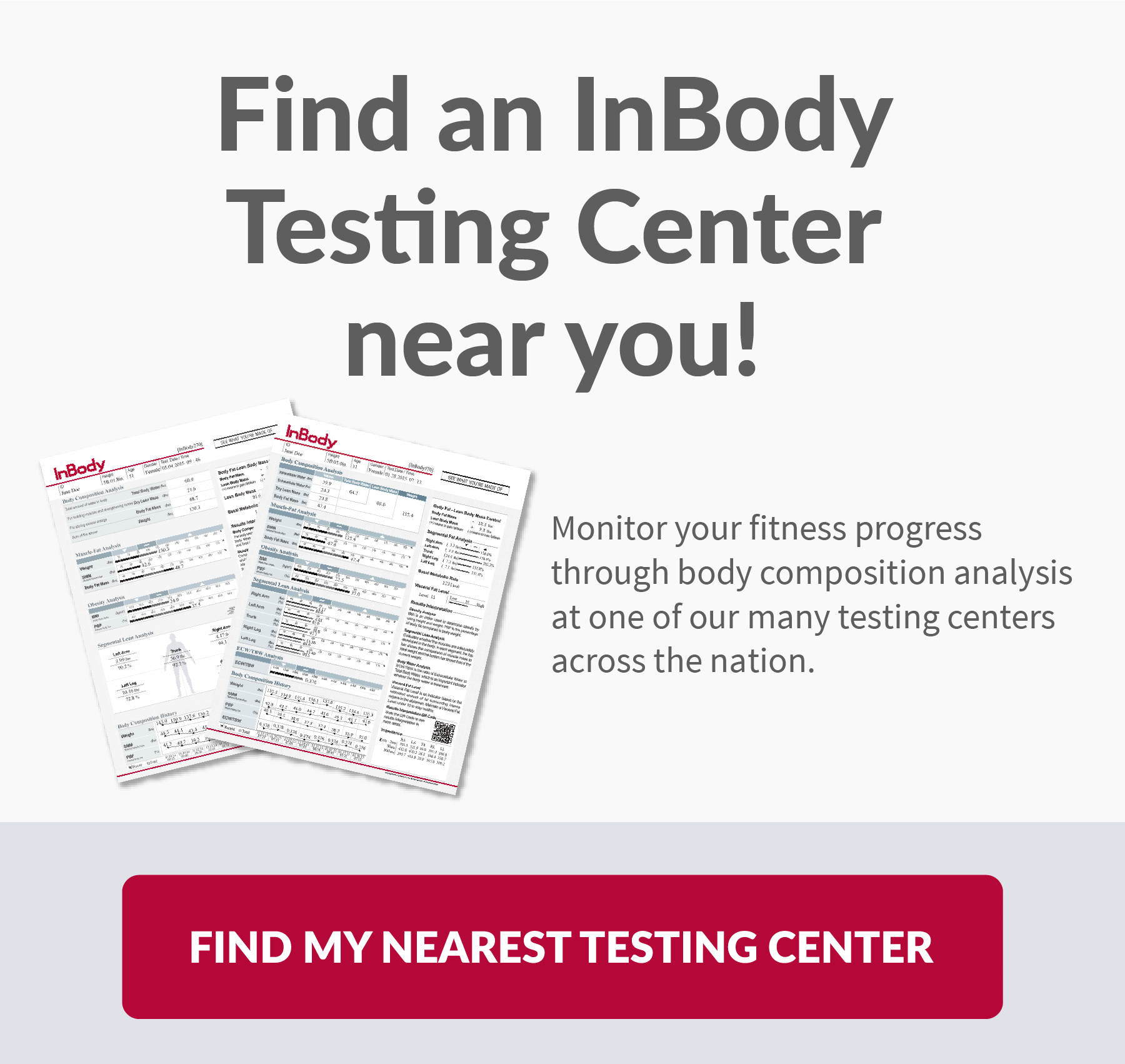Extracellular Water (ECW) Ratio, a critical parameter in body composition analysis, plays a significant role in understanding various health conditions. One of the lesser-known connections is between the ECW Ratio and inflammation, which can impact overall health and wellness.
This blog post will delve into the hidden link between the ECW Ratio and inflammation, exploring how the ECW Ratio is associated with acute and chronic inflammation. By understanding these connections, we can better monitor, manage, and improve the health of different kinds of patients.
What is ECW Ratio and Why Does It Matter?
The ECW Ratio is an important indicator of body water balance, which measures the proportion of extracellular water (the fluid outside cells) to total body water (the combined amount of water inside and outside cells).

In a healthy state, the ECW Ratio should range between 0.360 to 0.390. When the ECW Ratio falls outside this range, it may indicate potential health concerns.
A ratio higher than the normal range may suggest an excess of extracellular water, which can be associated with inflammation and other health conditions such as heart and kidney disease.
By looking at how the ECW Ratio equation is calculated above, you will be able to understand the underlying factors and how they are linked to inflammation in the body.
[Note: Total Body Water (TBW) = Extracellular Water (ECW) + Intracellular Water (ICW).]
The increase in ECW Ratio is often due to two factors:
- An increase in ECW
- A decrease in ICW
In this blog post, we will primarily discuss the increase in extracellular water (ECW) and its link to inflammation in our body.
Acute Inflammation and ECW Ratio
Acute inflammation is the body’s natural response to injury or infection, characterized by redness, swelling, heat, and pain. It is a necessary and beneficial process that helps the body heal and repair damaged tissue. Acute inflammation can cause localized edema, which may affect the ECW Ratio by increasing extracellular water in the affected area.

The Segmental ECW Ratio Analysis allows health professionals to identify any body segments that may experience circulation issues that could be due to health conditions, rehabilitation (injury), or peripheral edema.
The Segmental ECW Ratio Analysis is a useful tool for health professionals to identify circulation issues in different parts of the body. By identifying the ECW Ratio in specific body segments, the analysis can help pinpoint potential injuries or inflammation that may be present in certain parts of the body segment.
Additionally, the analysis can be used to monitor circulation during rehabilitation from injury, as well as track the progression of peripheral edema in patients. With this information, health professionals can develop more targeted treatment plans to address circulation issues and improve overall health outcomes for their patients.*
Chronic Inflammation and ECW Ratio
Chronic inflammation is a persistent, low-grade inflammation that can have serious health consequences if left unchecked.
It can cause swelling, which can lead to an increase in extracellular water and affect the reading of the ECW Ratio. This can be particularly problematic for patients with chronic diseases, such as heart and kidney disease, diabetes, and cancer, who may already be dealing with imbalances in their body water distribution.
By understanding the link between chronic inflammation and swelling, healthcare professionals can better monitor and manage the condition, potentially improving outcomes for their patients.

Chronic inflammation is a common issue in hemodialysis patients and is associated with increased morbidity and mortality. This inflammation is frequently accompanied by malnutrition, resulting in a malnutrition-inflammation complex syndrome. One study found that HD patients with low albumin levels and high C-reactive protein (CRP) levels, which are indicative of inflammation, had a higher risk of mortality.
The ECW Ratio may be useful in this situation, as patients with complications from diseases often require different adjustments to their dry weight. For example, hemodialysis patients with diabetes or low albumin levels will have a higher ECW Ratio value, which needs to be considered when determining the dry weight.
Using the ECW Ratio value in conjunction with trusted bioelectrical impedance analysis can provide healthcare professionals with more informed decision-making capabilities when consulting and intervening with dialysis patients.
How the ECW Ratio is applied in Nephrology?Monitoring and Managing ECW Ratio and Inflammation
Understanding the hidden link between the ECW Ratio and inflammation highlights the importance of monitoring and managing these factors for optimal health. Reducing inflammation may help maintain a healthy ECW Ratio and prevent the development of chronic health conditions associated with inflammation.
Patients with chronic diseases who require monitoring of their inflammation status and edema symptoms are strongly advised to seek a proper diagnosis and consultation with a medical specialist.*
Conclusion
The hidden link between the ECW Ratio and inflammation is a critical aspect of understanding overall health and well-being. By monitoring the ECW Ratio using InBody devices, individuals and healthcare professionals can assess body water circulation, identify potential imbalances, and take necessary steps to manage inflammation and related health conditions.
Now that you understand how an increase in ECW can result in an increase in the ECW Ratio, you should also be aware that a decrease in ICW can also contribute to an increase in the ECW Ratio.
Check out our blog post on the topic to learn more about the decrease in ICW and its relation to health complications. Understanding both factors could give you a more complete picture of how the ECW Ratio is related to inflammation and how it can affect your overall health and wellness.
*Disclaimer: Please consult your healthcare professional for interpretation of the results and diagnosis.












